It wasn’t long ago that 3D printing with metal was just for industry. But today, metal 3D printing is possible with more types of printers, at a wider range of price points, and from a growing number of services. Plus, there are more companies in the metal 3D printer market spurring constant innovation.
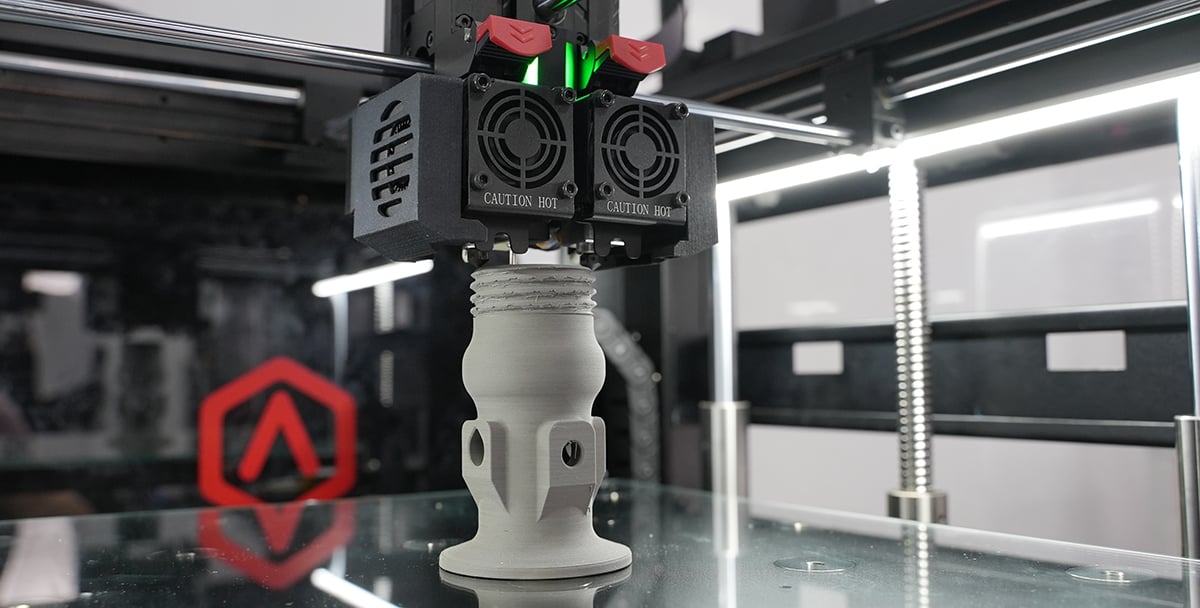
Here, we cover the cheapest ways, the fastest ways, the most precise ways, and everything in between, to help you select the best method for your use, whether you’re going to purchase a 3D printer or use a service.
Let’s take a look at the top 10 ways you can 3D print metal parts and what metals you can print with.
10 Methods of Metal 3D Printing
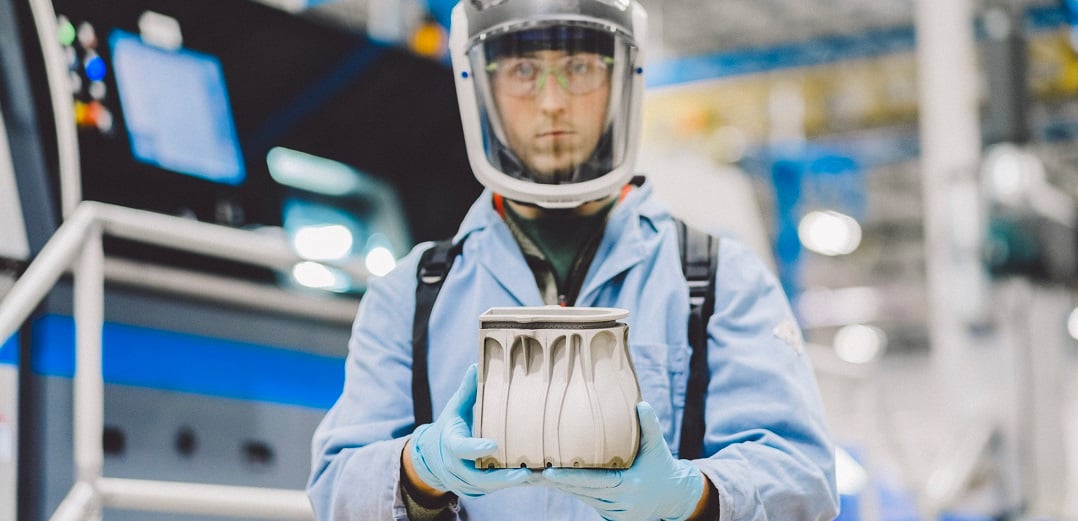
The roughly 10 ways to 3D print metal parts fall into technology categories loosely based on whether you’re printing with metal filament, metal powder, or metal wire. There are even metal-infused resins, metal rods, and metal pellets as material options, all producing parts with different attributes.
Metal 3D Printing Technologies
- Metal Filament Fused Deposition Melting (FDM)
- Laser Powder Bed Fusion (LPBF)
- Electron Beam Powder Bed Fusion, aka Electron Beam Melting (EBM)
- Metal Binder Jetting
- Wire Arc Additive Manufacturing (WAAM)
- Laser Directed Energy Deposition (Laser DED)
- Electron Beam Directed Energy Deposition (eBeam DED)
- Micro Metal 3D Printing
- Cold Spray
- Molten Direct Energy Deposition
Selecting which metal technology to use is a balance of needs. Consider the importance of detail and shape, size, strength, type of metal, cost, printing speed, and volume. All of the current technologies have pros and cons when it comes to these considerations and, unfortunately, no method 3D prints super-strong parts quickly, cheaply, and perfectly, so pick your priorities.
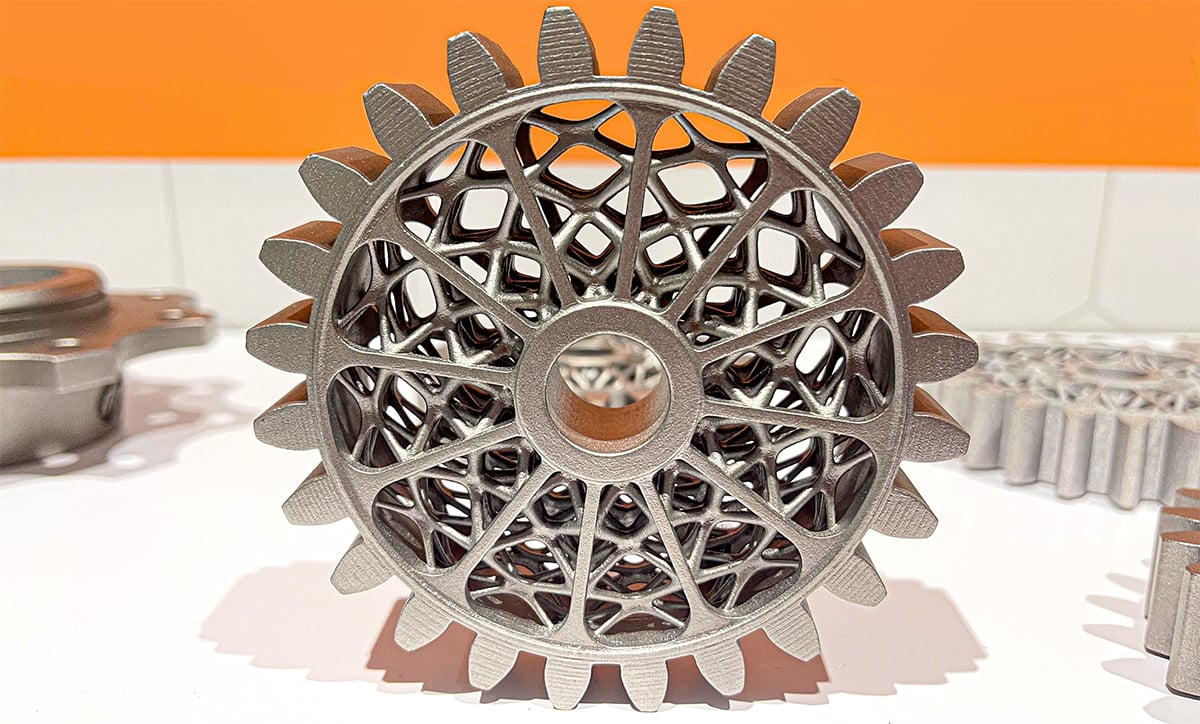
Apples to Oranges
As you can see in the chart above, not all metal 3D printing technology features are measured the same way, especially when it comes to build speed. Some technologies record build speed by the weight of the material deposited, which can depend on the material, while others feature the area of the material. These speeds are also affected by the shape of the part being printed. Plus, every 3D printer within a particular technology can not achieve the same speeds.
Layer height, which is often a clue to the technology’s ability to print fine detail, is another tricky measurement. It’s affected by the material used, the shape of the part, and the speed of the printing.
Before investing in any one technology, request a sample part (the same part) from multiple 3D printer manufacturers. The sample parts should arrive with a report on how long it took to print the part, how many parts of that size and shape the printer could print at once, the price per part, and the material consumption.
10 Metal 3D Printing Technologies in Brief
1. FDM & Extrusion
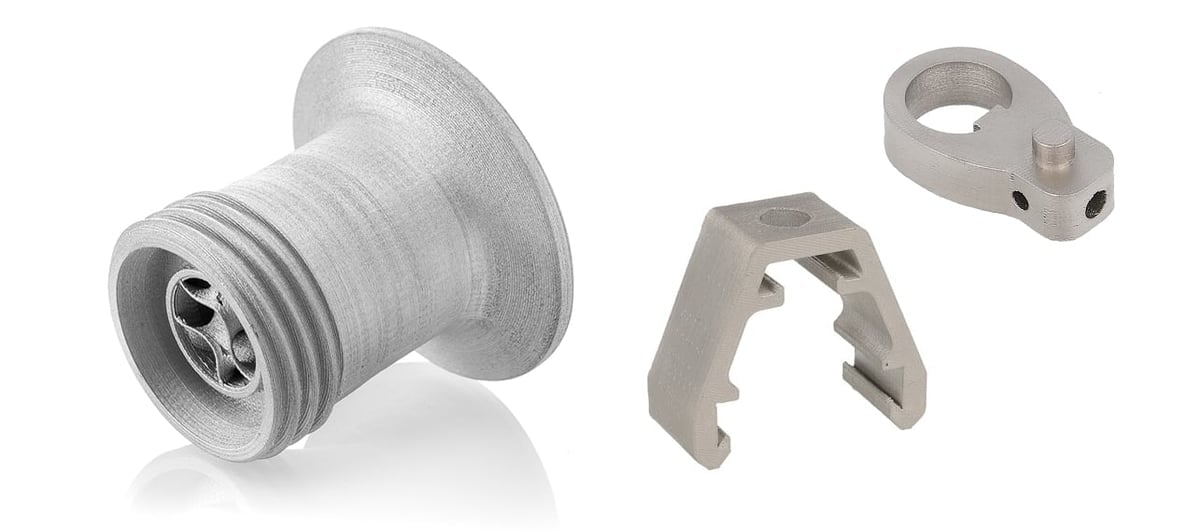
There are a few technologies for 3D printing that fall under extrusion. One, is the familiar fused deposition modeling (FDM) with filament made of a plastic base with metal particles evenly infused within it. Metal filaments for metal parts must contain a high percentage of metal powder (around 80%) and go through the post-processing stages to remove the plastic component and condense the metal part. Several desktop FDM printers on the market can print with today’s metal filaments available in stainless steel (316L, 17-4 PH), copper, and titanium.
Another technology uses what is essentially filament with a much higher concentration of metal power. So much so that it’s practically a solid rod of metal, but can still be heated and extruded. These materials are typically exclusive to a particular 3D printer, such as Markforged or Desktop Metal, and are more costly than regular FDM but less than other metal 3D printing methods.
The third metal extrusion method to mention (although there are more in the industrial sector) is extrusion using metal pellets, which can be the same material used in injection molding and thus lower cost, or specially made pellets. There aren’t many metal pellet printers yet, Pollen is one, but the segment is rapidly growing.
2. Laser Powder Bed Fusion
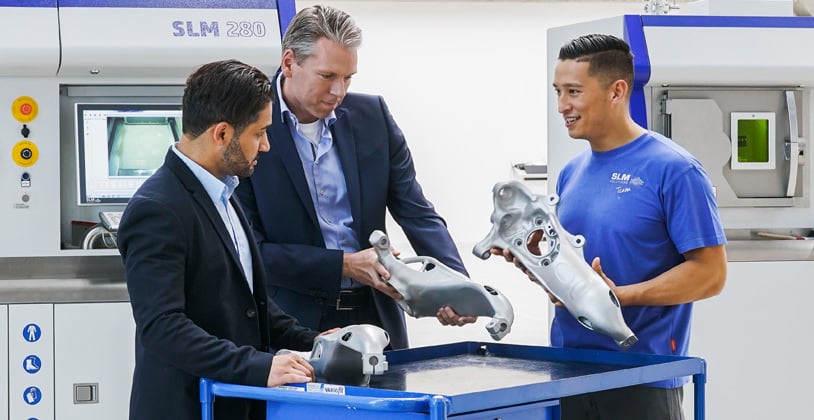
Metal LPBF is the most widely use metal 3D printing method today. These 3D printers use high-powered lasers to selectively melt a metal powder layer by layer. The technology is often called selective laser melting or powder bed fusion along with printer-specific terms. The melted parts fuse together on a molecular basis until the homogenous model is complete. Printer operators can use “pure” metal materials, although alloys also see regular use.
An LPBF 3D printer houses metal feedstock powder. The printer pushes powder into the chamber where a recoater blade (like a windshield wiper) or roller spreads it into a thin layer across the substrate or build plate. Next, a high-powered laser fuses a two-dimensional slice of the part by selectively melting the powdered material. The build plate then lowers by the height of one small layer, and the coater spreads another layer of fresh powder across the surface. The printer repeats these steps until you have the finished part.
Metal LPBF can have a better initial surface finish and higher precision than EBM.
3. Electron Beam Powder Bed Fusion
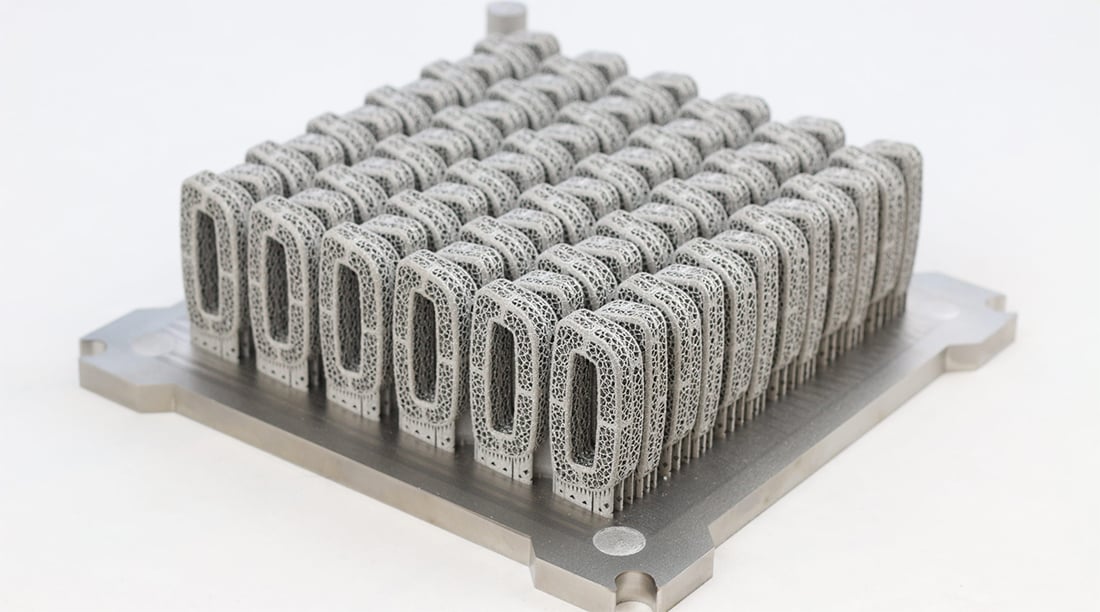
Electron beam melting is a 3D printing technology that also uses metal powder as a material but an electron beam as the energy source. It is mainly used with conductive metals. All EBM 3D printers consist of an energy source capable of emitting the electron beam, a powder container, a powder feeder, a powder recoater, and a heated build platform. Important to note is that the printing process must take place in a vacuum. That’s because electrons of the electron beam would otherwise collide with gas molecules, which would “kill” the electron beam.
EBM can be faster than SLM due to the higher power of electron beam energy and produce parts with lower residual stress than metal LPBF.
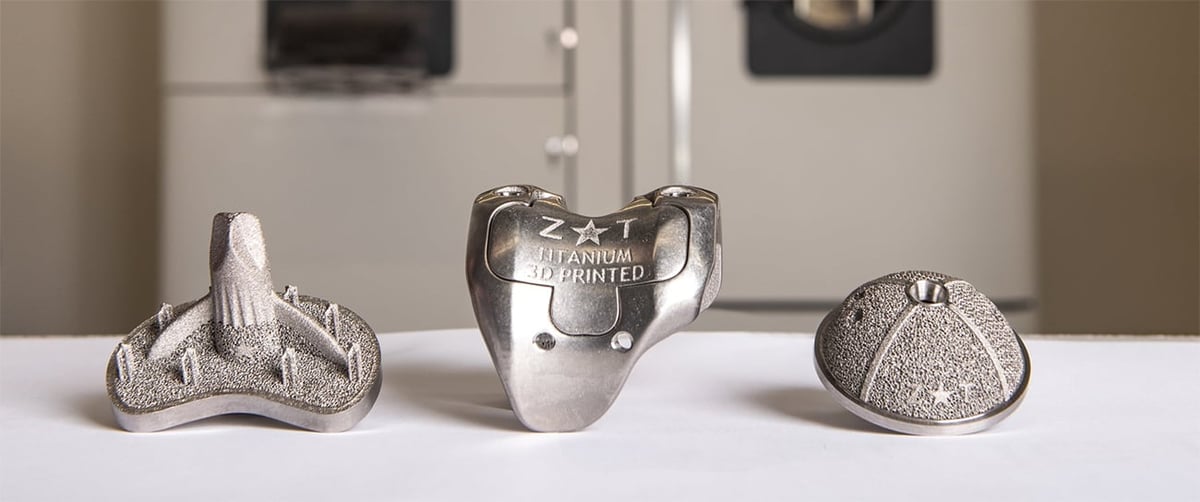
These sample hip and knee implants (above) were printed using electron beam melting (EBM). Parts, such as these, are intricately detailed, made out of costly titanium, and constructed to an extremely high material quality and tolerance to meet government standards for medical implants. The vacuum environment of EBM 3D printers ensures clean and controlled build conditions, and the high-power electron beam enables the printer to produce multiple parts per build for high productivity.
4. Metal Binder Jetting
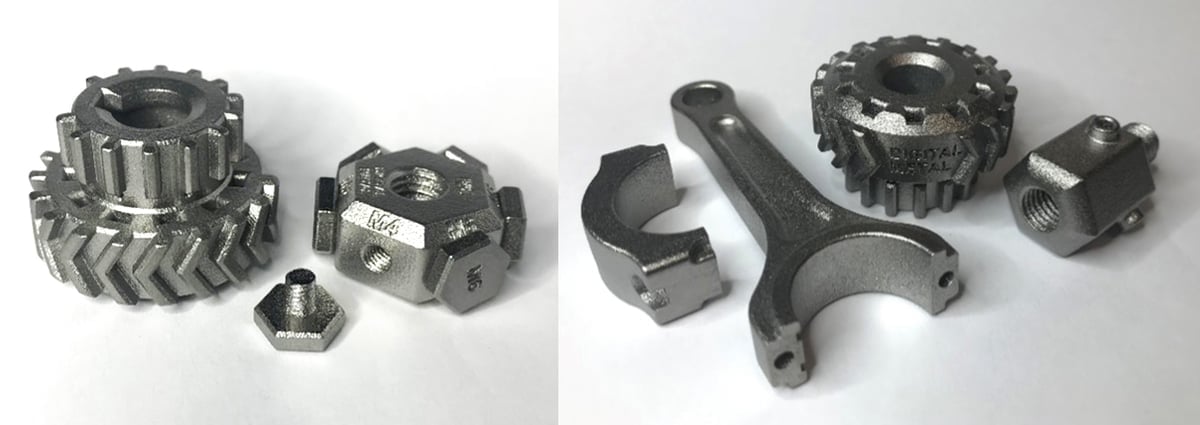
Metal binder jetting (as opposed to polymer binder jetting) used metal powder and a liquid binder or glue to form a part that then has to go through post-processing steps to become a fully metal object. As with other additive manufacturing processes, binder jetting can produce complex components with internal channels and structures, eliminating the need for welding and reducing the number of parts and weight of components. Redesigning your metal parts for binder jetting can lead to a dramatic reduction in material used and wasted.
Overall, the material properties of metal binder jet parts are equivalent to metal parts produced with metal injection molding, which is one of the most widely used manufacturing methods for the mass production of metal parts. Plus, binder jet parts exhibit higher surface smoothness, especially in internal channels.
Binder jetting metal is faster than LPBF so it is often the choice for larger volumes of batch production. After printing, the parts is heated to remove the polymer binder and solidify the parts. This can lead to porosity in the metal which is actually a sought-after feature used to achieve lighter end parts for medical applications, such as implants.
There are only a handful of metal binder jetting machines on the market. The top three are compared in the article linked below.

These golf clubs above by Cobra Golf were 3D printed using metal binder jetting from HP. The unique shape could not be made with any other manufacturing technology. Because thousands of identical parts were required, the manufacturer chose binder jetting for its speed and throughput. The technology also produces an excellent surface finish. Cobra Golf was also able to reshore club manufacturing to a US-based additive manufacturer, saving the environmental and real costs of shipping from its manufacturing hub in Asia.
5. Wire Arc Additive Manufacturing
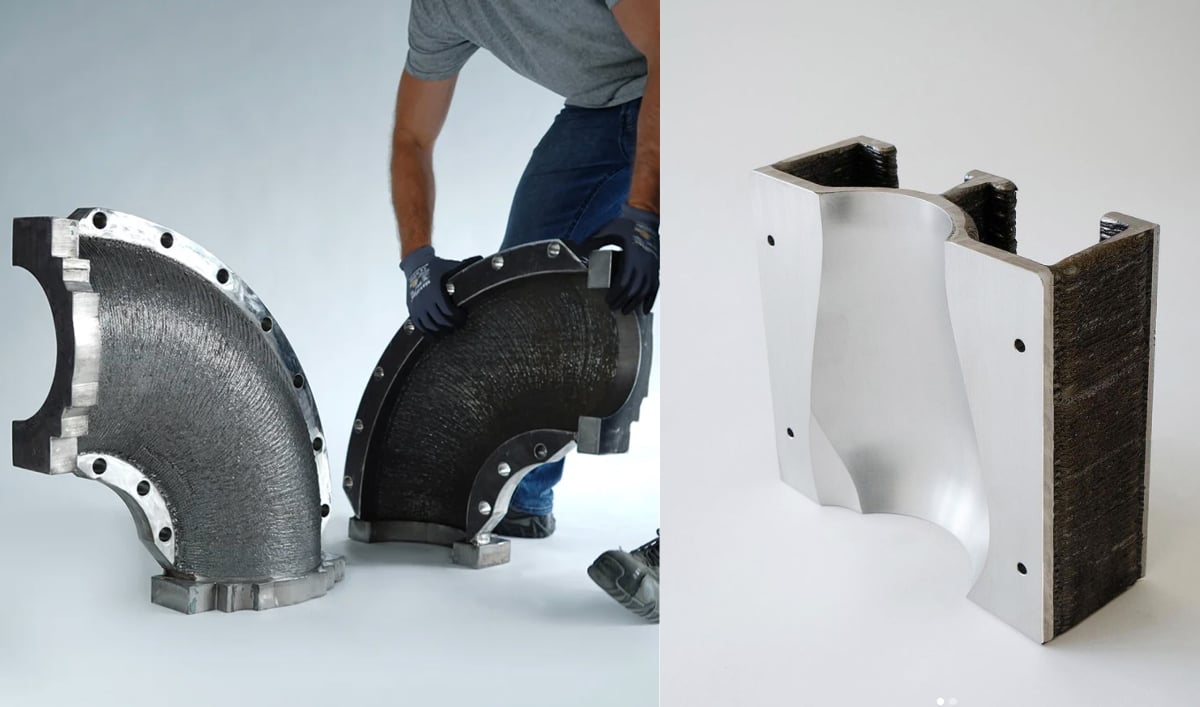
Wire arc additive manufacturing (WAAM) uses metal wire as the material and an electric arc as an energy source, very similar to welding. The arc melts the wire as it’s deposited layer on top of layer by a robotic arm onto a surface, such as a multi-axis turntable. As with welding, an inert gas is used to prevent oxidation and improve or control the metal’s properties.
The process gradually builds material into a complete 3D object or a repair of an existing object. There are no support structures to remove, and finished parts can be CNC machined to tight tolerances if necessary or surface polished. Typically, printed parts receive a heat treatment to relieve any residual stresses.
This technology often uses the same wire material used in welding and other technologies, so it’s economical on that front.

This massive crane hook above was printed with wire arc additive manufacturing (WAAM) then machined. An extremely large and heavy part like this is ideal for WAAM because the technology is quicker than any traditional metal manufacturing method, such as forging or casting, and just as strong. Plus, this part can be produced at a facility closer to the point of need or even on-site, for example, on an oil rig.
6. Laser Directed Energy Deposition
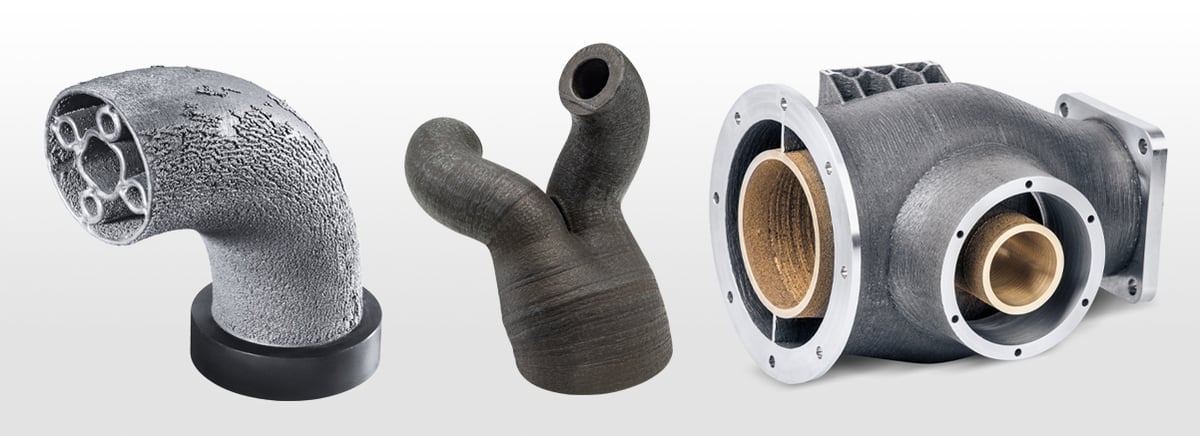
Directed energy deposition (DED) with a laser (as opposed to an electron beam) uses the laser to melt a metal material that is simultaneously deposited by a nozzle. The metal material can be in powder or wire form. Despite its ability to build full parts, this technology is usually used to repair or add material to existing objects. When combined with CNC machining, it can produce a precise finished part.
DED systems can differ from LPBF systems as the powders used are often larger in size and require higher energy density. This results in faster build rates as compared with LPBF system. However, this leads to poorer surface quality that may require additional machining. Support structures commonly used in LPBF systems are seldom or never used in DED, which often uses multiple-axis turntables to rotate the build platform to achieve varying features. Without the need for a powder bed, DED systems can do repair or printing on existing parts.
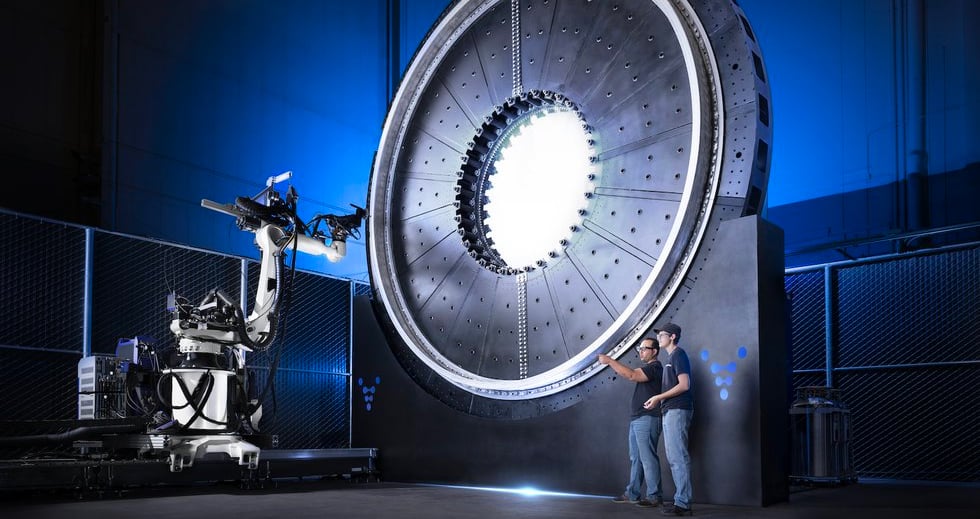
In 2022, Relativity Space, the first company to 3D print rockets and build the largest metal 3D printers in the world, unveiled the latest iteration of its DED 3D printer called Stargate 4th Generation. These printers will underpin both the development and rate production of Terran R, Relativity’s fully reusable, 3D printed rocket that will be capable of launching 20,000 kg to low Earth orbit.
The newest Stargate printer technology defies traditional printing constraints by moving horizontally as it feeds multiple wires into a single print head to print orbital rockets. Relativity is developing customized software and machine learning techniques to allow these printers to print more complex and significantly larger metal products, with improved print speed and reliability. Stargate 4th Generation printers also radically simplify manufacturing supply chains, as they are capable of printing a rocket with 100x fewer parts in a matter of months, according to Relativity Space.
7. Electron Beam Directed Energy Deposition
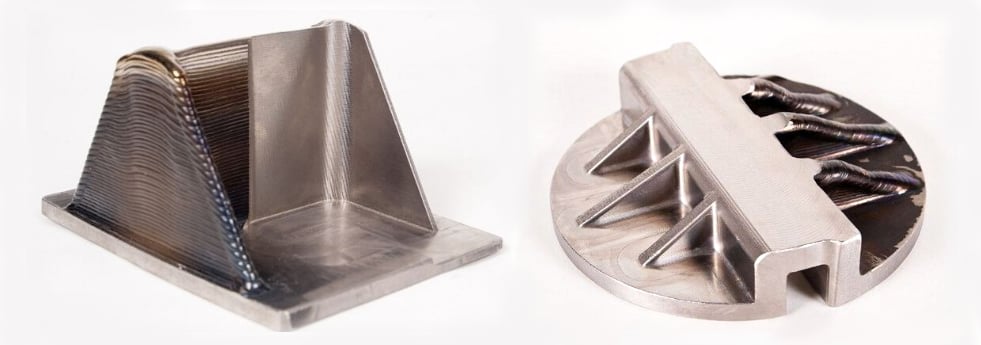
Directed energy deposition with an electron beam uses an electron beam to melt a metal wire (not powder) that is simultaneously deposited by a nozzle. Very similar to WAAM above, e-beam DED is prized for its accuracy and speed. Unlike WAAM, these printers required a vacuum chamber. Typically parts are printed near net shape, then CNC machined to tight tolerances as shown in the photo above.
8. Micro 3D Printing Metals
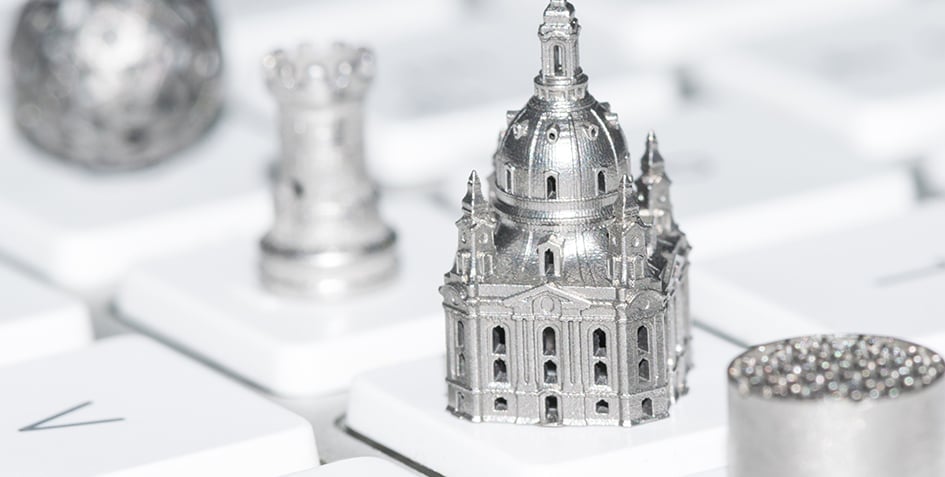
Granted, micro 3D printing isn’t a method but a category of technologies. There are at least three ways the make micro-scale metal 3D printed parts: micro selective laser sintering (μSLS), which is a small-scale version of laser powder bed fusion covered above; metal lithography also called metal-infused resin 3D printing; and Electrochemical Deposition, which is a proprietary technology from called Exaddon involving a printing nozzle delivers a liquid containing metal ions.
Metal lithography, also called lithography-based metal manufacturing (LMM), uses a photosensitive resins containing metal power, called slurry, as feedstock. This light-sensitive slurry is selectively polymerized layer by layer with light. Metal lithography boasts excellent surface quality and is mostly, but not exclusively, used in micro 3D printing, so it has extremely high detail.
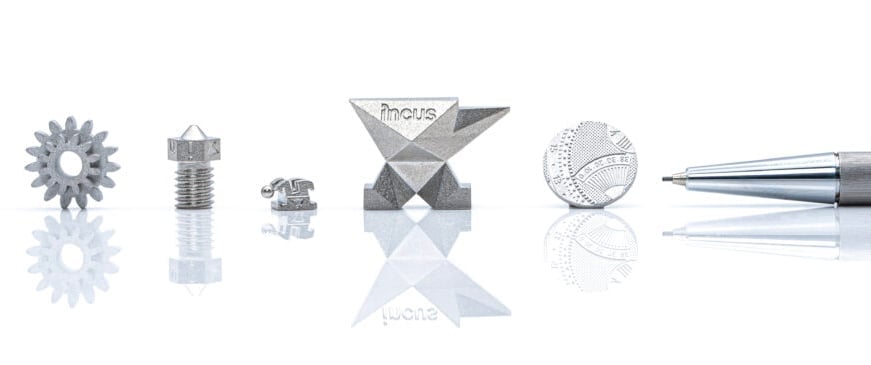
9. Cold Spray
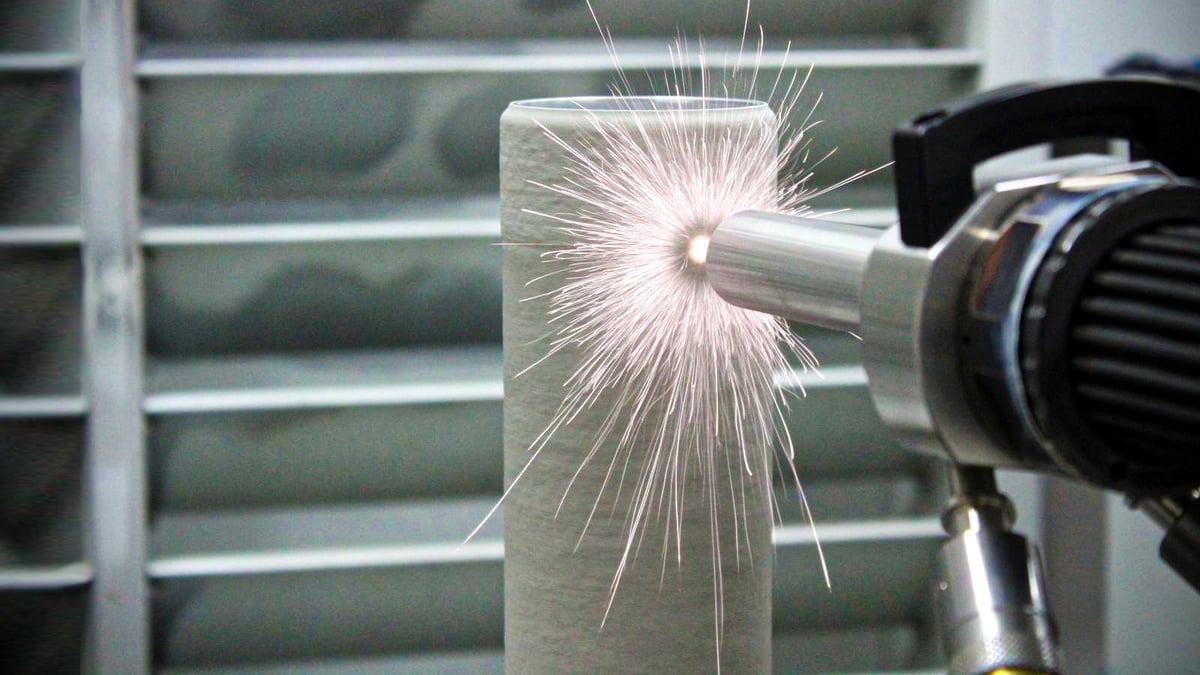
Cold spray is a manufacturing technology that sprays metal powders at supersonic speeds to bond them without melting them, which produces almost no thermal stress. Since the early 2000s it’s been used as a coating process, but more recently, several companies have adapted cold spray for additive manufacturing because it can layer metal in exact geometries up to several centimeters at about 50 to 100 times higher speed than typical metal 3D printers.
For additive manufacturing, cold spray is being used to quickly manufacture metal replacement parts and for on-location repairs and restoration of metal components, such as military equipment and machinery in the oil and gas industry, saving companies potentially millions in remanufacturing and interruptions in workflows. Repaired parts, in some cases, can be better than new ones.

10. Molten Direct Energy Deposition
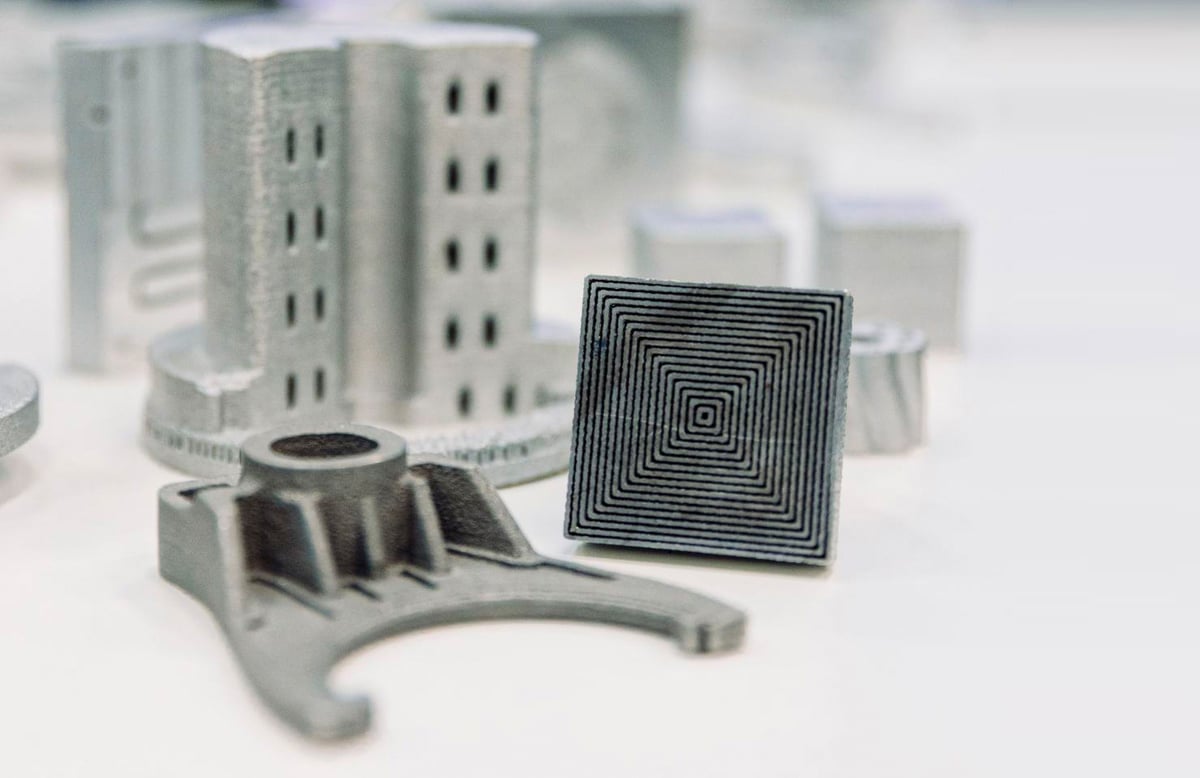
Molten direct energy deposition, sometimes referred to as liquid metal 3D printing or liquid metal drop-on-demand, is a process that uses heat to melt (or near melt) metal, usually aluminum, then deposit it on a build plate layer by layer to form a 3D object.
This technology differs from metal extrusion 3D printing in that with extrusion the feedstock is a polymer with metal powder inside so that the metal is extrudable. The polymer is then removed in the secondary heat treatment stage. Molten DED, on the other hand, uses a pure metal, such as common aluminum wire feedstock, that’s heated to be extrudable then solidifies. This technology doesn’t require any secondary processes.
This is probably the least common 3D printing technology but one with vast potential. Although molten metal 3D printers are rare — Grob offers the GMP300 and Additec offers the ElemX liquid metal printers — variations on this technology are in development. A start-up called Valcun launched its Minerva aluminum extrusion 3D printer in 2023.
The potential benefit of using heat to melt and then deposit metals is the ability to use less energy than other DED processes and potentially use recycled metal directly as feedstock instead of wire or highly processed metal powders saving money on the raw material.
More Ways

As if 10 ways weren’t enough, there are a few more unique and specialty ways to 3D print with metal.
Cold Metal Fusion is a promising new technology that enables you to 3D print metal on your SLS 3D printer. SLS is typically a polymer technology, but with a new material from a company called Headmade Materials, you can print metal on your SLS. The material consists of metal particles coated in a polymer so they can be used in theoretically any SLS machine, although only a few have yet been certified. The resulting parts are similar to binder jetting metal, but SLS machines are typically far less expansive than metal binder jetting machines, so the benefit is cost and accessibility.
Friction energy deposition (also called friction stir energy deposition) is another interesting metal technology. FED is a solid-state process, meaning the material does not reach the melting temperature during printing so it produces parts with low residual stresses and full density using significantly lower energy than more conventional fusion-based processes. FED is also a single-step process that does not require sintering or post processing. Only available from a small number of companies, including Meld Manufacturing, the process has potential for quick metal manufacturing without hazardous metal powders or heat.
Metals in 3D Printing

Just about any metal can be 3D printed. One of the main advantages of 3D printing metal, apart from the part complexity and speed, is the savings of raw material and virtually no waste. This is extremely important when printing with expensive materials, such as titanium.
Some 3D printing methods can use widely available materials already used in injection molding, welding, or casting, such as some powders, wires, and pellets. Other materials are uniquely formulated for 3D printing. If you know the material your part needs to be printed in, check out our guides below to all the ways you can print titanium, aluminum, and steel.
Metal 3D Printing Services
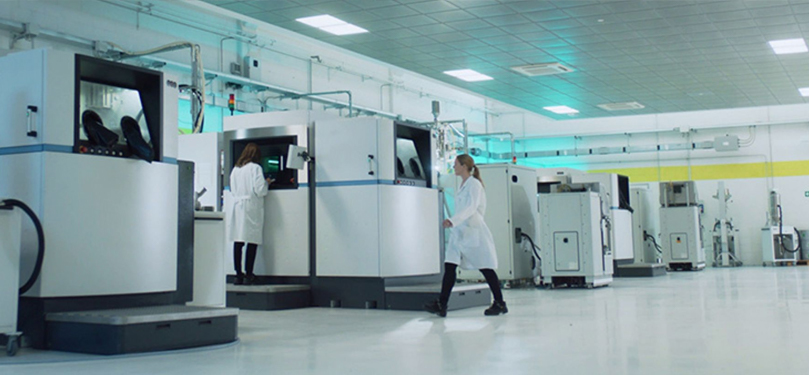
To benefit from all the advantages 3D printing brings to metal parts and products, you don’t always need to invest in your own 3D printers. There is a growing variety of 3D printing services around the globe that can not only print your product or prototype in the metal of your choice, but they can even advise you on the best methods, materials, and design for your parts.
Choosing a metal 3D printing partner can be time-consuming so check out the 3D printing marketplace of providers offered by Craftcloud. This platform enables you to upload your digital part file and get instant quotes from a range of suppliers you can pick from.
License: The text of "How to 3D Print Metal: The 10 Best Ways" by All3DP Pro is licensed under a Creative Commons Attribution 4.0 International License.

















